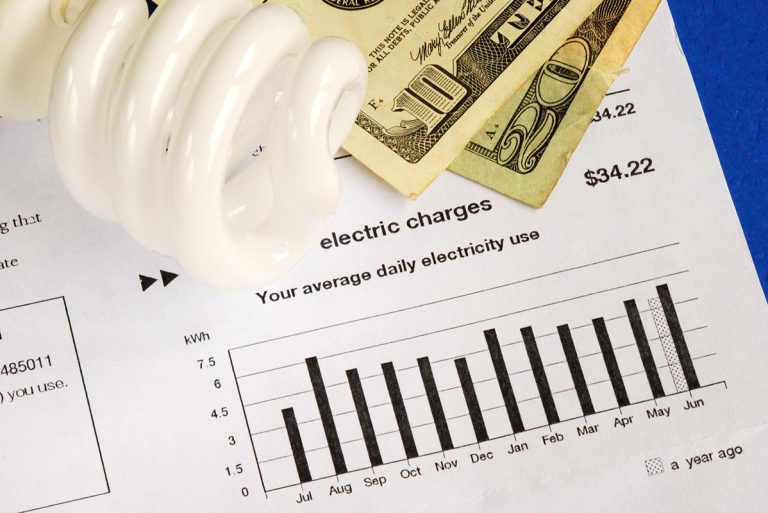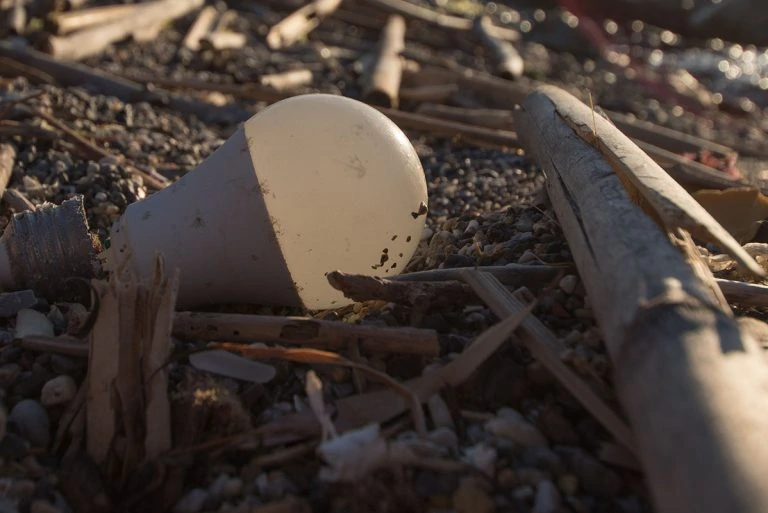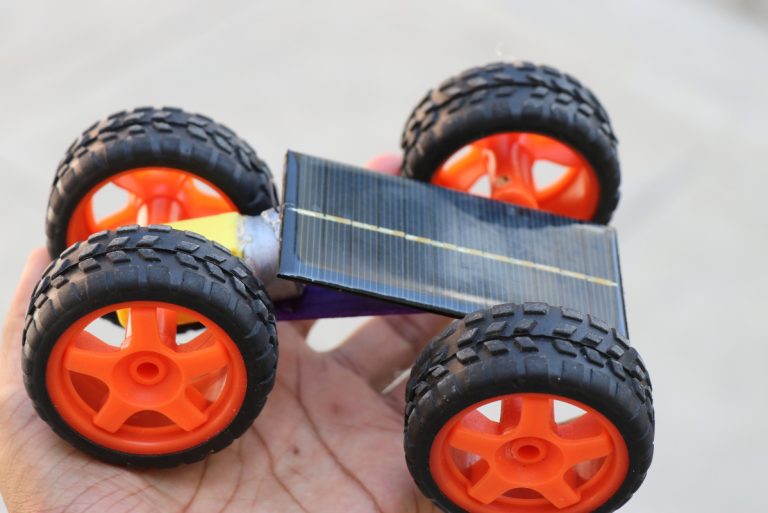Energy costs aren’t getting any lower and if your latest bill has you lost for words, it may be time to bring your electricity costs under control. Take a closer look at how you use electricity in your home to see where you can save energy and money.
Changing your habits and the way you use appliances can make a big difference to the bill you receive. To help you get started, we’ve gathered 40 great tips to lower your electricity bills, covering every room in your home.
Save electricity in the kitchen
The kitchen is the heart of the home so it is no surprise that the place where you heat things up and cool things down is going to be a major electricity consumer, using as much as 15% of a household’s electricity.
According to the US Energy Information Administration (EIA), electricity is the most common form of energy used for cooking and over 30% of US households have several fridges and freezers. Target your kitchen for energy saving by trying these quick tips:
1. Cover your food as you cook

Leaving the lids off your pots and pans as you cook causes significant energy loss. Covering your food as it cooks retains heat and speeds up the process. You can also save energy by using a pressure cooker which also makes the electricity you use go further by accelerating your cooking times.
2. Defrost your food before cooking it
Cooking meals from frozen requires additional energy to defrost the food before it actually cooks. Safely defrost the food and cut the cooking time and the amount of electricity you use.
3. Learn to love salads!
Give your stovetop, oven, or grill a night off and enjoy the simpler fare that doesn’t require cooking. Slow-cooking meat consumes up to 3 kWh per meal, so forgoing that brisket or pot roast can save a significant amount of power if you do it regularly.
4. Avoid prolonged pre-heating of your oven
Reduce the time you preheat your oven or even skip preheating altogether. Many dishes simply don’t need to be slammed into a raging inferno, especially if you’re cooking them for a long time. Depending on your energy tariff, a 2000 to 3000W oven costs around 50 cents per hour to run, so passing on that 20-minute pre-heat could save you over $60 on your electricity bill annually.
5. Skip the self-cleaning feature on your oven
Re-familiarize yourself with an oven cleaner, rubber gloves and some elbow grease because a single use of the high-heat self-cleaning feature on your oven can consume as much as a month’s worth of day-to-day oven use! Hitting temperatures as high as 1000 degrees Fahrenheit (537 degrees Celsius) regularly also really ages your heating element.
6. Harness the residual heat of your oven to do some extra cooking

If you’re cooking a big roast like Thanksgiving dinner, put the leftover heat in your oven to prepare some additional dishes after you have switched it off. You can use the residual heat in your oven to re-warm food, bake cookies, prepare vegetables, or even get the dough to rise as it cools down.
7. Fill your freezer!
Don’t waste money powering an empty freezer. A full freezer is much more efficient as the energy you use is keeping food cold. The mass of frozen food also cools the freezer meaning that your appliance does not have to work as hard so you can shave some cents off your bills.
8. Vac your refrigerator coils
Over time, dust and dirt build up on the condensing coils at the back of your refrigerator. This creates an insulating layer that warms up the coils and causes the refrigerator to work that much harder (and consume more electricity) to keep everything chilled. Energy saving after cleaning these coils can be as much as 11% according to EnergyStar.gov.
9. Consider using a multi-cooker
Do you run the oven microwave and hob to prepare your evening meal? Switching to a multi-cooker can not only simplify your life but also save massive amounts of energy (and money) on preparing meals. These ingenious electrical appliances can roast, fry, broil and boil with much lower energy consumption than your hob or oven.
10. Use your dishwasher…

Running your dishwasher can actually save you money when compared to using electrically heated hot water to do the washing up by hand. A modern dishwasher uses between 1400 and 2500 watts per cycle, with costs that can be as low as 12 cents per load. Just make sure that you only run full loads.
11. But switch off the drying cycle of your dishwasher
The heated drying portion of your dishwasher cycle uses more energy than all other parts of the cycle combined! Cutting out the heated drying cycle delivers a 15% energy saving, and may be more easygoing on your plates and cutlery too. If your dishwasher has an air drying setting, this uses much less energy.
Cut back the kilowatts in the bathroom
If you’re relying on electricity for hot water, you’re going to find that your cost of daily baths and showers really adds up. Water heating is the second largest energy expense in most homes.
Simple adjustments to how you use your bathroom and its appliances will save the cents that add up to dollars off your bill. Try these energy-saving tips for the bathroom that will not only cut your electricity bill but your water bill too:
12. Lower your hot water temperature

Be proactive about turning down the thermostat on your hot water heater and save over $400 annually across your home. If you have never checked your hot water heater thermostat, it may still be on the manufacturer’s default setting of 140 ºF (60 ºC) which may present a scalding risk.
Turning your hot water down to a more reasonable 113 ºF (45 ºC) also reduces the heat lost from your hot water tank to the surrounding area, further reducing your consumption of electricity to keep the water hot.
13. Try a Navy shower
If your epic showers leave a queue by the bathroom door, why not inject some military discipline and save energy and water by using the Navy shower technique? A Navy shower is a two-minute scrub that involves wetting the body, turning off the water to lather and scrub the body and turning the water back on to rinse off.
Let the pros show you how it’s done:
This no-frills shower uses as little as 3 gallons (11 liters) of hot water vs 60 gallons (230 liters) for a standard ten-minute shower. You could save up to 15,000 gallons of hot water annually taking a big chunk off your electricity bill.
14. Check your HW heater probe
An immersion heater is like a giant kettle and can develop the limescale buildup that a regular kettle does. Over time, the buildup coats the heating probe, making the water heater work harder to heat water to the required temperature.
Suspect this problem if you have rising electricity bills with no significant change in the way you use your energy. A related problem is a failure of the water heater probe to cut out and stop heating your water when it reaches the required temperature. Your plumber can help you with both problems, replacing the heating probe if necessary.
15. Switch your showerhead
A simple switch of your showerhead to an aerated showerhead could help you shave even more off that electricity bill. An aerated showerhead, mixes the water with air This gives you the sensation of great water pressure but actually uses less hot water. Look out for EPA-recommended WaterSense labeled shower heads, water-saving showerheads that use only 2 gallons of water per minute.
Cut electricity costs in the laundry room
When you’re looking for ways to lower your electricity bill, laundry is often the first thing that comes to mind. After all, the average family needs to wash and dry at least eight loads of laundry per week, with annual costs that can exceed $400 per year! Save on electricity and shrink your bill with these top laundry tips:
16. Wash full loads of laundry

One of the best ways to save cash on electricity costs for your washer and dryer is to wash full loads of laundry. Use laundry bins to collect your family’s clothes and organize them into full loads of laundry. By ensuring you wash a full load every time you use the energy more efficiently and run your washer less often.
17. Wash your clothing at a lower temperature
A significant amount of the electricity used by a washer goes towards heating water, so you can save up to 40% of this energy by simply washing your clothes at a lower temperature. Modern detergents are effective at temperatures as low as 60°F (15°C), so a switch down from 140°F (60ºC) or 104° (40ºC) will still get your clothes clean.
18. Tackle soiling and stains pre-wash
If you’re concerned that washing clothes at a lower temperature won’t remove stains, why not treat your clothing with a stain remover or soak soiled items pre-wash? By loosening stubborn stains before laundering your items, you can be confident they will wash well at lower temperatures.
19. Air dry your laundry

Tumble dryers are extremely quick and convenient, especially in the winter months. But air drying your clothes outside on the washing line or inside with an airer can save you up to 5000 watts of power per laundry load. If you’re worried about the stiffness of line-dried clothing and beddings you use less detergent, add a cup of white vinegar to the wash, or use a fabric softener.
20. Use your dryer at a lower temperature
Switching down to the lower temperature setting will save electricity, even if you have to run the dryer for longer. You can make drying clothes at a lower temperature more efficient by separating lightweight fabrics from heavier items like towels as the lightweight fabrics dry more quickly.
21. Add laundry balls to your dryer
Laundry balls are great for cutting down the drying time in your dryer. When you toss a couple of these balls into your drying cycle, the balls keep the laundry separated so the warm air flows between fabrics and dries them more efficiently. They are also great for softening your clothes.
22. Keep your lint filter clean
Empty and clean the lint filter of your dryer after each drying cycle to maximize the circulation of warm air in your drying cycle. Give the filter a thorough clean regularly.
Lower your electricity use in the living room
The living room is one of those areas of your home where everyone hangs out, but nobody takes responsibility for switching things off. But by changing the setup of your living space and developing some new habits, you can really cut down your electricity bill. Try these bill-busting tips for size:
23. Switch to LED bulbs

If you haven’t already, a switch to LED light bulbs from the older incandescent lightbulb delivers immediate savings on your electricity bill. According to Phillips, an LED bulb saves up to 90% of the electricity used to power a traditional incandescent bulb. You’ll also save cash on replacement light bulbs in your home as LED bulbs last 10 times as long as traditional bulbs.
24. Install window shades to shield your room from the summer sun
Rather than reaching for the AC remote, consider installing a sun shade or screen over your window to keep out the hot summer sun and cool your property. Clever use of window treatments like awnings or blinds can reduce unwanted heat entering your home by up to 77%. The best thing about installing screening is that it also reduces heat loss in the winter, providing year-round benefits.
25. Modern dimmer switches can cut power use
Upgrading your home light switches to modern dimmer switches can cut energy consumption by your lighting and provide significant savings on your utility bill. To get the level of lighting you need, the dimmer switch reduces the flow of electricity to the bulb, decreasing its brightness. This reduces the overall energy consumption of your lighting and may even increase the longevity of your bulbs.
26. Use heavy lined curtains in the winter
In a cold winter, you will be glad of the extra insulation properly lined curtains can give. After spending money on electric heating or an energy-efficient portable space heater for your living room, the lining of a heavy curtain prevents heat from escaping through your window as a radiative loss. If you like your existing curtains, simply buy and attach a separate thermal curtain lining.
27. Install an overhead fan

Tired of sky-high electricity bills in the summer because of your AC? Take drastic action by installing an overhead fan to cool your rooms. Don’t underestimate the humble overhead fan. It really gets the air in the room circulating and the air movement will make you feel cool. The power consumption of even a high-speed ceiling fan can be as low as 75 watts, comparable to a lightbulb.
28. Give the Wi-Fi a rest
Wi-Fi is an unofficial amenity in most homes, but it really doesn’t need to be up and running 24 hours per day. Your router may be small, but in a month it can consume over 7.3 kWh of electricity. By turning off your router at the mains overnight, you’ll save almost $40 per year.
29. Get some draught excluders
Draught excluders are great for insulating the parts of your home where you are losing heat to outside. By blocking the bottom of doors and windows, you help your home retain heat and feel warmer, making it less likely that you’ll reach for your portable electric heater.
30. Switch off devices at the mains

Make switching off appliances at the mains a habit in your home. So-called ‘vampire devices’ like your TV, phone charger, and printer continue to consume electricity even when you have left them on standby. The amount of wasted energy expense of standby electronics can total tens of dollars annually. An easy save if everyone plays their part.
31. Put your evening lighting on a timer or sensor
Coming home to a well-lit house on cold winter nights is definitely reassuring, but if you leave them on throughout the day while you are out, you are wasting a lot of energy. Thankfully, you have a variety of timed and targeted smart home lighting solutions that only turn your lights on when you need it.
You can use smart home technology to switch on specific lights in your home remotely via a mobile app. Alternatively, plug lamps into a mechanical or digital timed socket you can set to the time you need.
Bring down your bills in your bedroom
Though the bedroom is not one of your home’s leading consumers of energy, there is still a lot you can do to save electricity there. Especially if you have brooding teens! Here are four quick things you can do to reduce electricity consumption in the bedroom:
32. Reduce screen time in your bedroom

It’s easy to spend hours browsing the internet or streaming movies on your smartphone or laptop. But all that screen time isn’t good for you or your electricity bill. If you use the full range of functionality on your smartphone, you’ll find that you are always charging it, and a laptop left on standby will continue to draw power even though you’re not using it.
Cut the cords and make your bedroom a screen-free environment. Switching off your electronics at least an hour before you sleep also gives you much better quality rest. And if you really must stay attached to your tech, use dark mode for your screens, which consumes less light or run the phone in the battery-saving mode.
33. On cold nights, use hot water bottles
On a chilly night, you may use an electric blanket to get your bed warm and toasty. Though electric blankets are energy efficient and save money on a space heater for your room, you can go one better by slipping a hot water bottle between the sheets.
An electric blanket can cost up to 71 cents for a single night’s use but it only costs 1 cent to boil the kettle for that hot water bottle.
34. Use plug-in sensor nightlights
If you have kids that need a lamp or nightlight to sleep, choose a night light that contains a sensor to automatically shut off the nightlight when the ambient light level rises. You could also use a remotely controlled smart nightlight you can switch off via a mobile app once your child is sleeping.
Last-minute general tips to lower your electricity bill
Trying all these tips and electricity-saving strategies should make a big dent in your electricity bill. But there is so much more you can do to reduce your home’s power consumption. Here are the last six things you can try:
35. Get a home energy assessment
Homeowners who are unsure of where to start in making inroads into their home energy use can contact their utility company to arrange a home energy assessment. An experienced contractor will visit your property to assess your home energy use and advise on the areas where you can make the largest savings.
With a home energy audit you can weigh up bigger energy-saving investments in your home like the installation of insulation or improved glazing. The contractor who completes the assessment will provide you with a detailed report and may direct you to subsidized home improvement programs that provide home energy upgrades at a discount.
36. Schedule seasonal HVAC maintenance
Are you running a dusty neglected AC every summer? It could be the cause of sky-high electricity bills. Without proper cleaning and maintenance, your AC has to use much more electricity to keep your household cool.
Properly maintained HVAC is extremely energy efficient. Get your AC up to spec and you’ll enjoy great performance with energy consumption that is at least 15% lower than a deteriorated AC. Once the AC contractor has paid their visit, keep up the good work by keeping ducts and vents clean.
37. Install smart home energy management

It’s hard to keep track of all the things you need to do to keep your electricity bill down. But technology has come to the rescue with smart home energy solutions that can comprehensively optimize and manage your energy consumption for lower bills.
Smart home energy solutions monitor your electricity consumption wirelessly. You can then use associated apps to review detailed information on the efficiency of your appliances and patterns of electricity use. You can also integrate smart home devices, like thermostats, and lightbulbs into your smart home energy management system.
38. Use off-peak energy
Depending on your energy tariff, you may pay less money for using electricity off-peak. During off-peak periods there is less demand on the grid and the cost of delivering electricity falls. Many utility companies pass on cheaper rates to customers who use off-peak energy. For instance, some plans offer free electricity on weekends.
By running your appliances at certain times of the day or night, you’ll pay less per kWh of electricity you use. Set timers on appliances like dishwashers and washers to take advantage of the reduced rate.
39. Look for more energy-efficient versions of key appliances

A sky-high electricity bill may mean that it’s time to upgrade older, less energy-efficient appliances for newer ones that are accredited for their energy performance.
According to the utility company, Star Energy Partners, the top five appliances that homeowners should consider replacing are:
- AC units
- Fridge-freezers
- Washers
- Dryers
- Televisions
If these common appliances are inefficient, it is harder to see the benefit of conserving energy in your home. Though there is an initial outlay, you will recoup the expense in lower electricity bills.
40. Opt for solar lights in the yard
Do you enjoy string or festoon lights in your yard in the evening? Plugging or wiring those lights into mains electricity will add to your utility bills. Let nature do the hard work and opt for solar lights that can store the sun’s energy during the day and release pleasing light throughout the evenings in your yard.
Rounding up
As you can see, lowering your electricity bill is not impossible. With all these great tips, you’ll certainly enjoy year-round savings on not just your electricity bill but utilities like gas and water too. Lots of small changes will produce the biggest energy-saving gains, but consistency is key. Remember to monitor your electricity usage so you can see the difference your changes are making.












